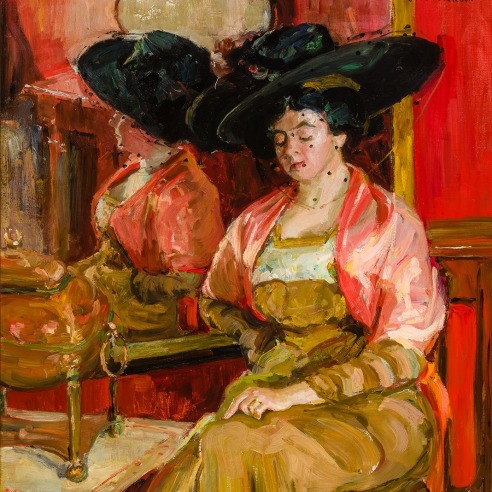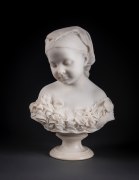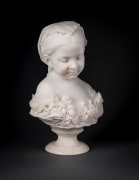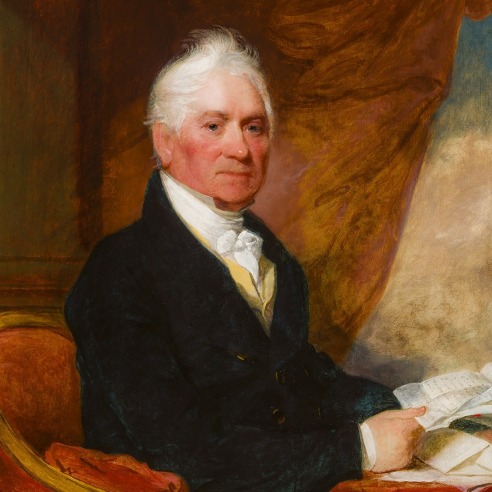
THOMAS BALL (1819–1911)
La Petite Pensée, 1871
Marble, 19 1/2 in. high x 13 1/4 in. wide x 8 1/4 in. deep
Signed and dated (on the back) T. BALL 1871
RECORDED: cf. Thomas Ball, My Threescore Years and Ten (Cambridge, Massachusetts: John Wilson and Son, 1891), p. 271 // cf. Wayne Craven, Sculpture in America (New York: Thomas Y. Crowell Company, 1968), p. 225 // cf. Thomas Ball, My Fourscore Years: Autobiography by Boston Sculptor Thomas Ball (1819–1911), Greta Elena Couper, ed. (Los Angeles,: Trecavalli Press, 1993), pp. 88, 113 “Works,” no. 32 illus. // Thayer Tolles, ed., American Sculpture in The Metropolitan Museum of Art (New York: The Metropolitan Museum of Art, 1999), pp. 82–83 illus.
EX COLL.: sale, Christie’s New York, December 2, 2004, no. 64; to private collection, until the present
In his autobiography, My Threescore Years and Ten, Thomas Ball describes the circumstances surrounding the creation of “the little head,” which he called La Petite Pensée. He modeled the bust in 1868, shortly before the Ball family left Florence for a trip back home to Boston. Ball’s career was thriving. He was in the process of building an ambitious home and studio on the newly laid out Via Dante da Castigione next door to his mentor and friend, Hiram Powers (1805–1873). In subsequent years, La Petite Pensée enjoyed considerable success.
La Petite Pensée is one of a number of child-themed ideal sculptures that Ball created at the height of his career. Variations on putti imagery, representations of angelic infants or children were, a staple of traditional art, and meshed nicely, as well, with mid-Victorian notions of idealized childhood. More to the point, they suited the temperament of this artist. Thomas Ball loved children and was the doting father of an only daughter. The popularity of La Petite Pensée confirms that Ball’s taste was shared by a significant number of his patrons. While the precise number of replicas of this bust is not known, The Metropolitan Museum of Art’s sculpture catalogue lists seven known in public collections including its own. The earliest is dated 1868; the latest, 1878. Marble versions were carved from Ball’s original design by the professional carvers that Ball engaged in Florence. There is one known version in bronze. Ball’s own title for the piece, La Petite Pensée is thought to be a pun, a reference to the reflective expression of the child’s face, and also to the identity of the flowers circling her shoulders which are pansies. La Pensée is the French word both for thought and for the flower called pansy.






